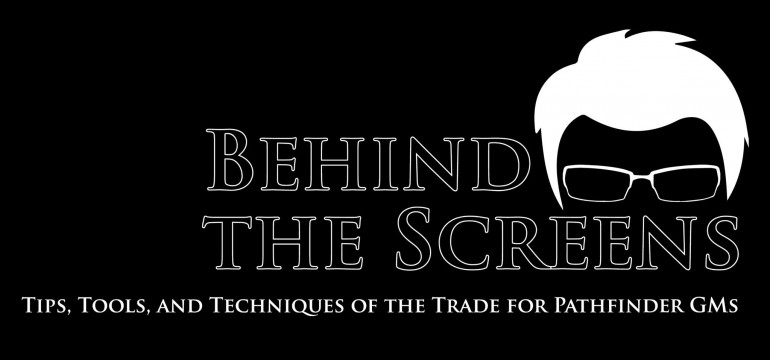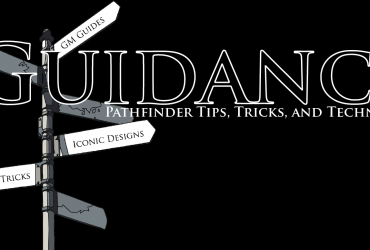Cheating is widely regarded as a social taboo. In the context of an RPG, cheating can range from lying about dice rolls to fudging inventory on a character sheet to reading the spoilers of an adventure the GM is about to run. Motivation for such acts is usually pretty straightforward. Players want to feel heroic. They want to succeed. They want to have the exact solution at the exact time. There have been entire sections written in books of every edition of every roleplaying game that address the issue of what to do with cheating players in your games and how to stop it. What I haven’t seen very much of are articles written about how cheating can benefit the game. And trust me, it can.
Let’s establish a couple of things straight off though. First, it’s much easier to cheat as a GM than as a player because of the established expectation of transparency at the table. Generally, players need to be up front and honest about their stats, backgrounds, and inventory. The GM needs such information to run the game and fairly arbitrate encounters. Players cheating is a bad thing. A player cheating is a slight against the GM and against other players. It’s a violation of the social contract and shouldn’t be done.
On the other hand, the GM’s role is shrouded in secrecy. The GM is privy to information that the other players simply don’t get to know about. There are specific sections of rulebooks, adventures, and other supplements that are designated as, “GM Only.” Heck, this is a blog column specifically targeted at Game Masters. The GM even gets a screen to hide their furtive scheming. The expectation is that GMs are already hiding a great deal of the game from their players. So if a GM isn’t completely transparent with his rules infractions it’s not immediately noticeable by the players.
Secondly, your role at the table is fundamentally different from that of a PC. Yours is the responsibility to plan campaigns, narrate stories, and marshal enemies. Your primary job at the table is to craft an adventure that is fun for everyone involved. In this regard it is paramount that you are fair to your players. The one Golden Rule is that the game needs to be fun for everyone (yourself included). So long as you keep to this rule, everything else is… malleable.
So how does a GM bend rules for fun? Here’s a simple but common example. The party is on a quest for an powerful artifact buried within an ancient tomb. They come to an enormous stone door that is magically warded. There are archaic pictographs above the door that describe how it is opened. The party’s Wizard rolls a Knowledge (history) and gets a 18. Oh! But the DC was 20. Now the party will never know how to open the door. This isn’t necessarily a problem if there’s more than one way to bypass to door or if defeating the door is only one way of getting to the McGuffin. But if there is only that one way and the party fails, then what?
Well you have to fudge the rules a bit, it’s the GM’s right and privilege. The Wizard gets a +2 bonus for having studied similar pictographs earlier in the dungeon. Or the DC is reduced by 2 because the pictographs are meant to be instructional. Huzzah! The Wizard figures it out and the story progresses. The mild inconvenience doesn’t become an insurmountable problem. The door is opened and the PCs go on their way.
Admittedly, this type of situation really only arises from lazy or truncated adventure writing. Ideally there should always be multiple solutions to a problem. But adventures aren’t always blessed with the benefit of extra word count. When running a published adventure for your home group, don’t be afraid to fudge a few rolls there or there in your party’s favor. Remember, there’s nothing fun about mediocrity. People play games like Pathfinder because they want to be the Heroes. While it’s okay if the party fails a d20 roll every now and then, it really shouldn’t be against something as simple as picking a basic lock or swinging a sword at a mook. When a PC fails at d20 roll it should mean something. But that’s another discussion entirely.
Another example of good cheating deals with monsters and combat. My home group consists mostly of veteran players who know the rules at least as well as I do. So when I describe an NPC casting a spell I immediately get assaulted with:
“Spellcraft 35! What’s he casting? Lightning Bolt? Hey 8d6. He’s an 8th level caster guys. Oh? The Reflex DC is only 16? His casting stat isn’t that high. No problem…”
Nothing breaks immersion for me like a player rattling off fluffless mechanical jargon in the middle of a tense combat. One of the things that I really liked about 4th Edition Dungeons & Dragons *gasp* was that the system had separate rules for statting up monsters compared to that for PCs. This lead to a lot of excitement around my table as the players would focus on what I described was happening rather than try and puzzle out what it was an NPC
So I’ve taken to applying this system to my homebrew games. The PCs were taking on a group of monstrous creatures lead by an enormous two-headed troll that I had previously decided would be extra deadly. The two-headed troll opened up with a Fireball. The PCs’ immediate response was, “We have to shut down the caster!
“I move up to it and attack! Stunning Fist!”
I publicly rolled 2d20 and get a 5 and a 18 on die.
“He passes.” I inform the players, much to their confusion.
The next round the two-headed troll full attacks with its claws, dropping the Brawler who had attempted to stun it and then blasting the rest of the PCs with another Fireball.
“What?! It is a Magus?”
“Can’t be, no spell components.”
“Is it Mythic?”
What I’d actually created was a strange amalgamation of rules. I’d decided that each head was an independent NPC that happened to share a body with its own class levels, Sorcerer and Fighter respectively. So the two-headed troll got two standard actions a turn and got to roll 2d20 and take the higher roll for saves. There are rules for a two-headed troll. There are rules for adding character levels to monsters. Did I ignore them all and create a unique and deadly monster for my players? Yes. Is that cheating? Technically. Yes. But I stand by that because it created a challenging and memorable encounter for my players.
Cheaty GMing is not an easy thing to do. You need to bend or break the rules in small ways so that your players don’t feel like things are unfair or they stop having fun. Let the Golden Rule guide your decisions. Is it fun? Yes. Then carry on. Remember that the whole point of the game is to allow the players to feel like they’re heroes within the story that you’re telling. Keep that in mind and you’ll having nothing to fear. Happy gamebreaking, my friends!
Thoughts on cheating? Have an experience you’d like to share? Leave it in the comments section below!






Leave a Reply